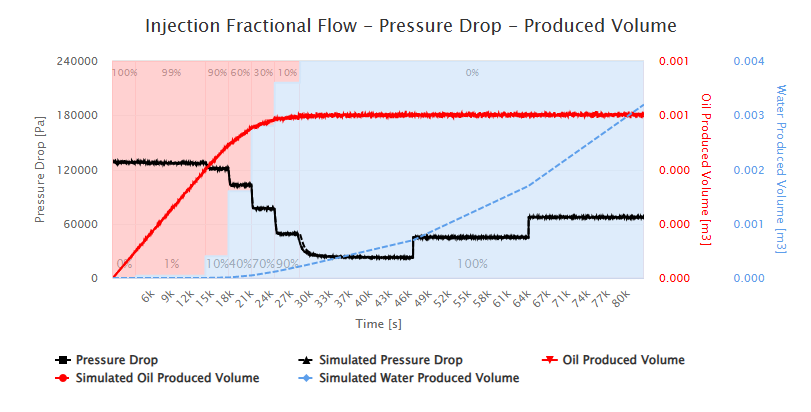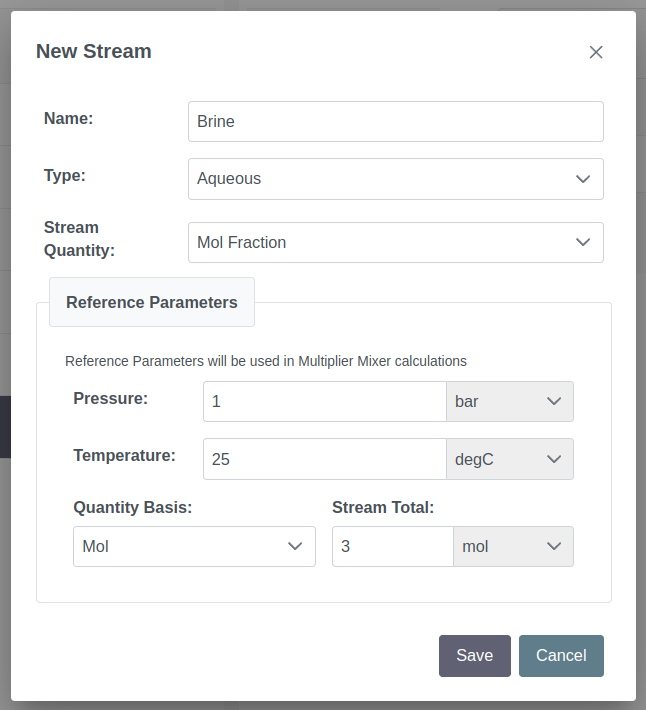Published on: 07/15/2025
We are proud to announce the release of RF-DAP version 2025.2!
This release brings several enhancements, new features, and bug fixes to improve your experience. Check out the new features for Catalogue, Special Core Analysis Simulator (SCAS), Fluid Analysis and Simulation Environment (FASE), and Simulation of Thermodynamic Electrolyte Partitioning and Speciation (STEPS) modules below.
The expanded Catalogue allows you to seamlessly save and share experimental results for Constant Volume Depletion (CVD), Multistage Separator, and Swelling Test experiments. This enhancement not only improves your data management, but it also facilitates better collaboration across your team. See examples in Figure 1, Figure 2, and Figure 3.

Figure 1 – Constant Volume Composition (CVD) experiment results page.

Figure 2 – Multistage Separator experiment results page.

Figure 3 – Swelling Test experiment results page.
The refined injection fractional flow plot provides clearer and more insightful analysis. You can now more effectively interpret pressure variations, understand breakthrough behavior, and assess injection performance, gaining deeper insights into your experimental and simulation data, as shown in Figure 4.

Figure 4 – Visualization of pressure variations and injection performance with the improved Fractional Flow, Pressure Drop, and Produced Volumes plot
More improvements to enhance your experience include:
Our new Carbon Capture and Storage (CCS) module empowers you to accurately model CO2 systems using industry-standard, non-cubic equations of state, includingSpan-Wagner, GERG-2008, and EoS-CG 2019. This provides a powerful suite of tools for advanced thermodynamic simulation of CO2-rich systems and impurities, as illustrated in Figure 5.

Figure 5 – A CO2 Phase Envelope modeled using Span-Wagner in the Phase Envelope page.
In addition to the new EoSs, you can now evaluate fluid properties and perform phase equilibrium calculations for various fluid models using flash simulation for the cubic Equations of State (EoSs): Peng-Robinson (PR) and Soave-Redlich-Kwong (SRK). This feature provides greater flexibility and precision when characterizing your fluid systems, as demonstrated in Figure 6.

Figure 6 – Different fluid models selection options in Flash page.
Defining your streams in STEPS is now more versatile! You can specify streams using a wider range of quantities, including moles, mass, volume, or concentrations. Additionally, you can save the stream’s reference condition and define the stream total amount to provide physical consistency in your simulations, as shown in Figure 7.

Figure 7 – The stream definition interface, highlighting the new options for input quantities.
Dive deeper into complex chemical reactions with our new Kinetics Study feature. You can now evaluate precipitation problems by configuring your chemical system and visualizing various properties, gaining insights into reaction rates and mechanisms, as illustrated in Figure 8.

Figure 8 – Visualization of kinetics study results on the Study page.
Simplify your mixing scenarios with the new Multiplier Mixer. This feature allows you to mix streams effortlessly using multipliers, and then visualize the total amount for the mixture based on your defined streams and multiplier values.
FASE
STEPS
SCAS
Catalogue
FASE
STEPS
SCAS